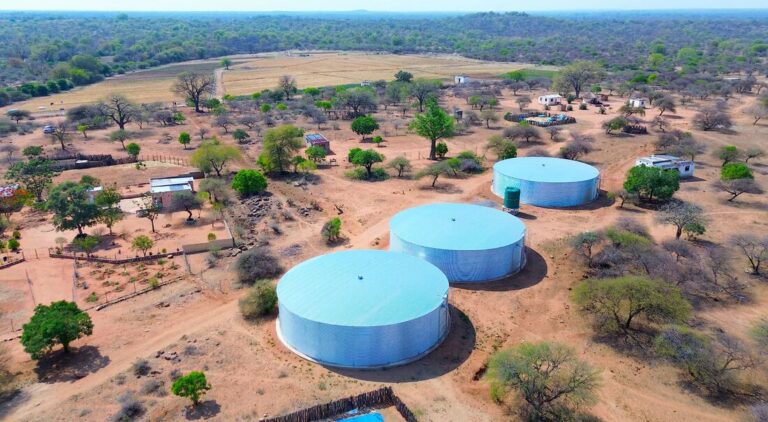Solar irrigation, AI tools and mobile platforms are transforming rural Zimbabwe, enabling smallholder farmers to grow year-round and increase yields.
Source: Tech-driven farming revolution transforms rural Zimbabwe | APAnews – African Press Agency

A quiet agricultural revolution is reshaping rural Zimbabwe where solar-powered irrigation, AI-driven crop monitoring and mobile market platforms are helping thousands of smallholder farmers grow food year-round, boost yields and access markets.
Once limited by erratic rainfall and drying dams, farmers in semi-arid regions of the southern African country are now cultivating crops throughout the year using solar irrigation systems and sand-abstraction technology that taps underground water.
“We used to watch our dam dry up every year. Now, we grow crops all year round,” said David Ndou, chairperson of the Sivuli irrigation scheme.
Supported by the European Union and implemented with technical assistance from the Food and Agriculture Organisation (FAO), these innovations are improving productivity and climate resilience.
Beyond water access, FAO’s Digital Villages initiative is equipping over 5,000 farmers –
especially women – with digital identities, geo-referenced advisory services and AI-enabled crop insights.
Mobile platforms are connecting producers to markets while digital literacy is driving smartphone adoption among women farmers.
FAO’s Earth Observation for Agricultural Statistics (EOSTAT) is also enhancing Zimbabwe’s capacity to monitor crop performance and climate risks.
Using satellite data, the system delivers over 80 percent accuracy in yield estimates and supports early warning for droughts and floods.
“EOSTAT is modernising agricultural monitoring through digital innovation and driving Zimbabwe’s shift toward data-driven, climate-smart agriculture,” Ministry of Agriculture’s early warning specialist Hillary Mugiyo said on Saturday.
National institutions, including the Zimbabwe Space Agency and the National University of Science and Technology, are receiving training in advanced geospatial analysis.
To modernise agricultural finance, FAO, the African Development Bank and the AFC Land Bank have introduced digital loan management systems.
Farmers now access inputs via e-vouchers, with real-time tracking of disbursements and repayments.
This has supported the cultivation of 17,000 hectares of winter wheat between May and August and 72,000 hectares of maize under Zimbabwe’s Seed Revolving Fund.
In parallel, FAO is strengthening food safety systems with support from the Fleming Fund and the Antimicrobial Resistance (AMR) Multi-Partner Trust Fund.
Fourteen sentinel laboratories have been rehabilitated to monitor AMR while farmers are adopting better hygiene and animal care practices to reduce antibiotic use.
Zimbabwe’s integrated approach – combining indigenous knowledge with modern technology – is offering a replicable model for climate-smart, digitally-enabled agriculture across Africa.
“In Zimbabwe, we are showcasing solutions that work, partnerships that deliver, and ideas that grow into meaningful change,” Assistant FAO Representative (Programmes), Tendai Munyokoveri, said.
The post Tech-driven farming revolution transforms rural Zimbabwe appeared first on Zimbabwe Situation.